Tags
Related Posts
Share This
Christ in the Desert
Seventy-five miles north of Santa Fe, New Mexico, deep in the Chama River Canyon Valley is the Monastery of Christ in the Desert, a small Benedictine community where monks live. Founded in 1964, the silent monks of the monastery spend four hours of their day praying, and four hours working. On Oct. 8, at 10 a.m., Head of the Photography Department Anthony O’Brien and Technical Faculty member Chris Nail took five photography students and one student journalist on a field trip to visit the monastery, and take photographs of the New Mexican landscape along the way.
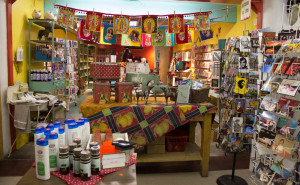
Inside the Bodes gas station store in Abiquiu, NM. Photo by Cris Galvez
The first stop we make along the way is about an hour outside of Santa Fe at a small gas station store called Bodes in Abiquiu. A large statue of a hot pink, metal flamingo perches on a cement stand at the entrance of the driveway.
“Everyone needs to take at least two pictures everywhere we stop,” O’Brien instructs as we clamber out of the car.
Inside, Bodes looks more like a mini grocery store than a gas station, with little, refrigerated displays full of produce and a section in the back for non-perishable food, as well as a large freezer along the back wall full of soft drinks. Off to the side in a small room customers can buy handmade soaps, Mexican flags and multicolored Frida Kahlo socks.
Outside, men in pick up trucks sit in their cars, parked crookedly in and around the parking spaces in front of Bodes. They smoke cigarettes out their windows and watch anyone who passes by.
Several miles out from Bodes, we stop again, this time along the highway to take photographs of the New Mexican scenery.
“Now, when you’re taking landscape photographs, you always want to have something in the foreground,” O’Brien says to his students. “That way, the audience has a vantage point into the rest of the picture.”
The students climb over the guardrail to get closer shots of the Chama River, which forks off into distant, blue shadowed mountains. Short, thin trees with golden leaved tops and stubby shrubs litter the bank litter the riverbank.
“There are a lot of places like this that we’ve been wanting to visit,” Nail explains, taking in a deep breath of the mountain air as Makenna McLeod and Tyler Abell race across the road to snap a few photos of the rocks behind us. “At some point, you just need to go visit them.”

Photography Technical Faculty member Chris Nail eating lunch along the Chama River with photography students Willow Howell, Makenna McLeod and Tyler Abell. Photo by Cris Galvez
Abell, a freshman in the photography department, is very excited to take advantage of the opportunity. Due to his digital camera running low on battery halfway through the trip, he was able to shoot both digital and film photographs
“I loved the experience of going out into the field and learning. It’s always fun to photograph all the little stops along the way,” he says.
The trip is full of the little stop Abell loves so much. We drive along the twisting highway until we find a picturesque spot to pull over along the side of the road and snap photographs. In one spot, the ground is covered in broken beer bottles, ripped up Budweiser boxes, and metal beer and soda cans. A few feet away from the road and the glistening broken glass, a single, beaded earring lies abandoned in the dirt.
Another stop features a huge tree that toppled over at some point in the past. Its bark is worn smooth from erosion and decay, making it easy to perch and take photos on. Nail warns everyone to be extremely cautious—this is a rattlesnake sanctuary and none of us are sure whether or not the snakes decided to inhabit the tree.
“Don’t get bitten,” O’Brien calls as everyone scampers into the brush with their cameras.
Driving further into Ghost Ranch towards the monastery, O’Brien explains that visitors are expected to be respectful and talk in a quiet tone of voice when they enter the monastery, especially the chapel. In 1994, O’Brien became part of the Benedictine community in order to shoot photographs for his project, “Light in the Desert.”
“Because they’re Benedictine, they don’t tell you who God is,” O’Brien says. “Instead, they allow everyone to try to find their own path to God.”
There aren’t any walls surrounding the monastery. Instead, it spreads out over several acres of land. It includes a guesthouse where visitors can stay for up to a minimum of two days and two nights for $90, and a ranch house, where the monks work. At the center of the monastery is the chapel connected to a gift shop and kitchen. Behind the chapel is the monks’ sleeping quarters.
Inside the chapel, it’s almost completely silent with the exception of visitors clearing their throats, or exiting the building—the screen and wooden door clink quietly even when they’re closed gently. The click of our cameras is deafening in the silence that is so deep and penetrating it slows my heart rate.

Photography Professor Chris Nail (left) and photography students Willow Howell, Makenna McLeod, and Tyler Abell at the Christ in the Desert Monastery at the Chama River canyon. Photo credit: Chris Dorantes
Around 4 p. m., the monks file into the chapel and sing psalms back and forth to each other. After they’ve finished, they bow to the stone alter in the center of the chapel. Then, they head to the back of the chapel, and bow to the golden alter decorated with intricately detailed paintings of the saints before disappearing behind it.
The visitors in the chapel sit in their pews, heads lowered, before they all stand up and head towards the door.
“I thought the trip was an amazing experience,” says sophomore photography major Willow Howell. “With the help of Tony and Chris, I feel like I have a better understanding of how to really look at a scene and create stronger images.”






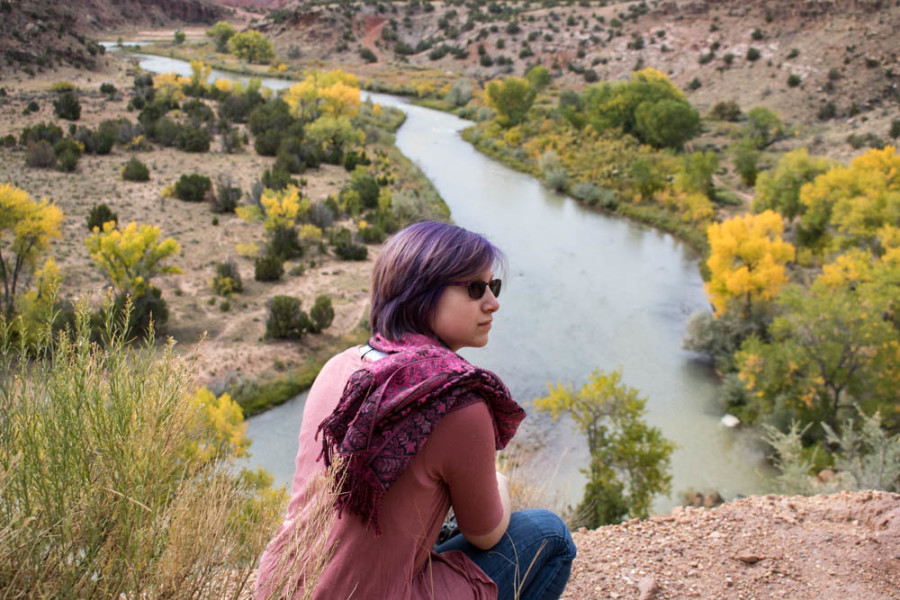

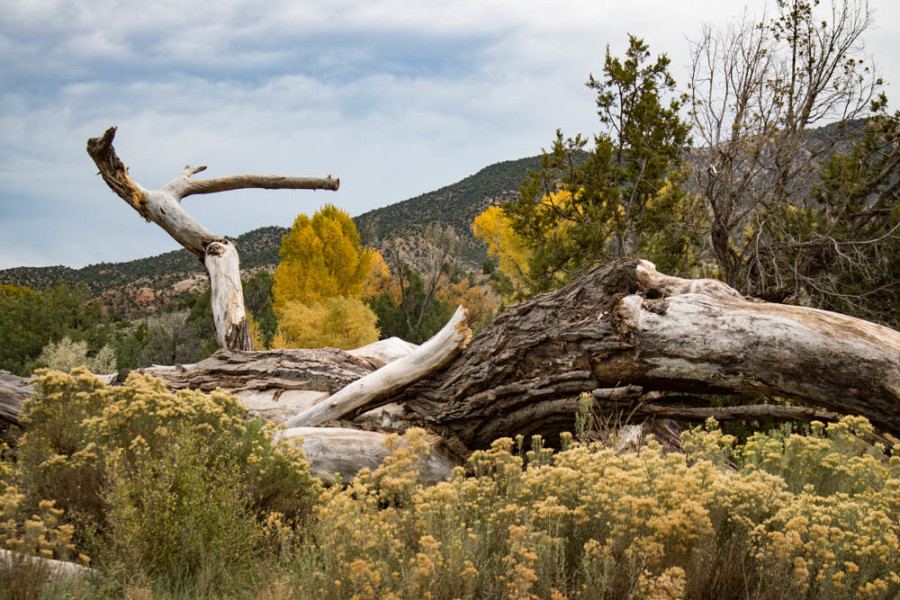
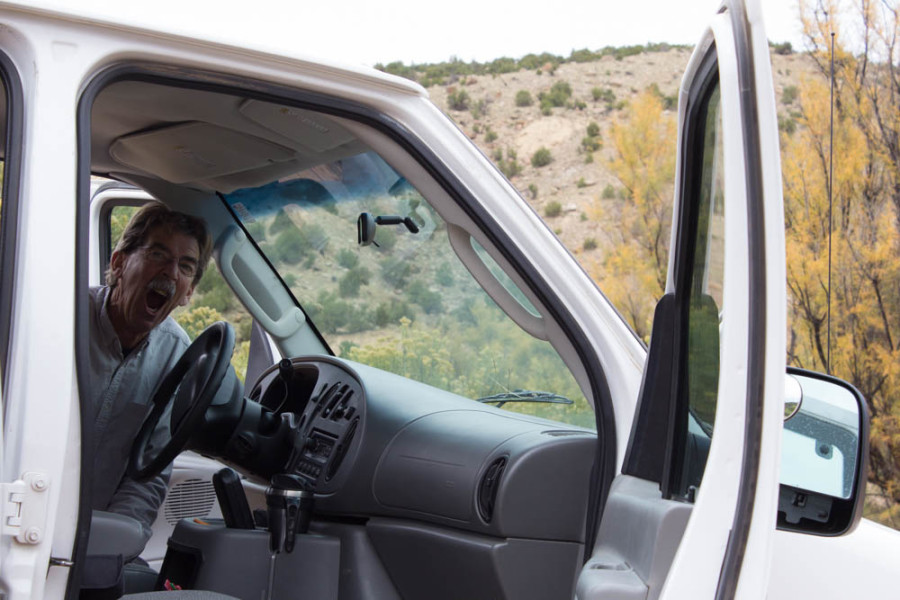
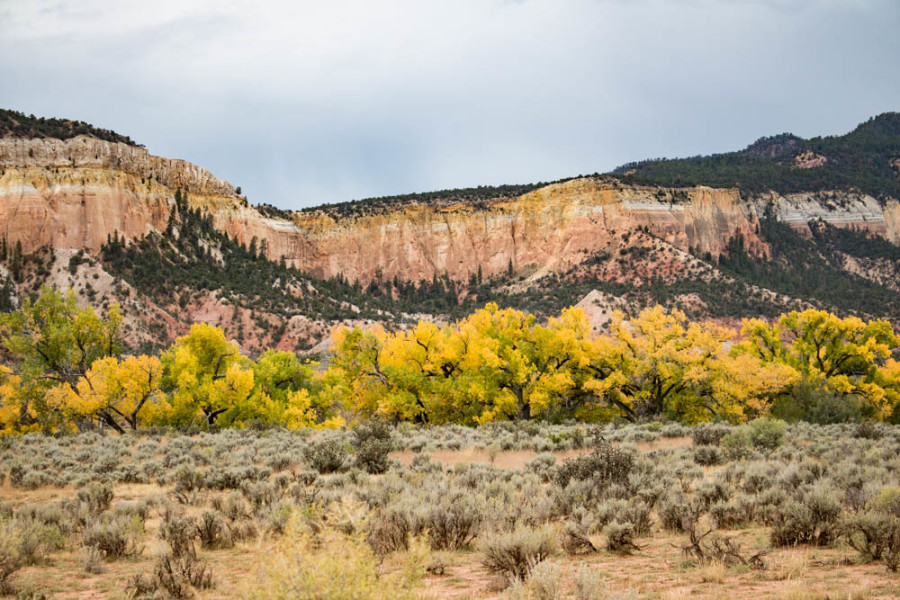
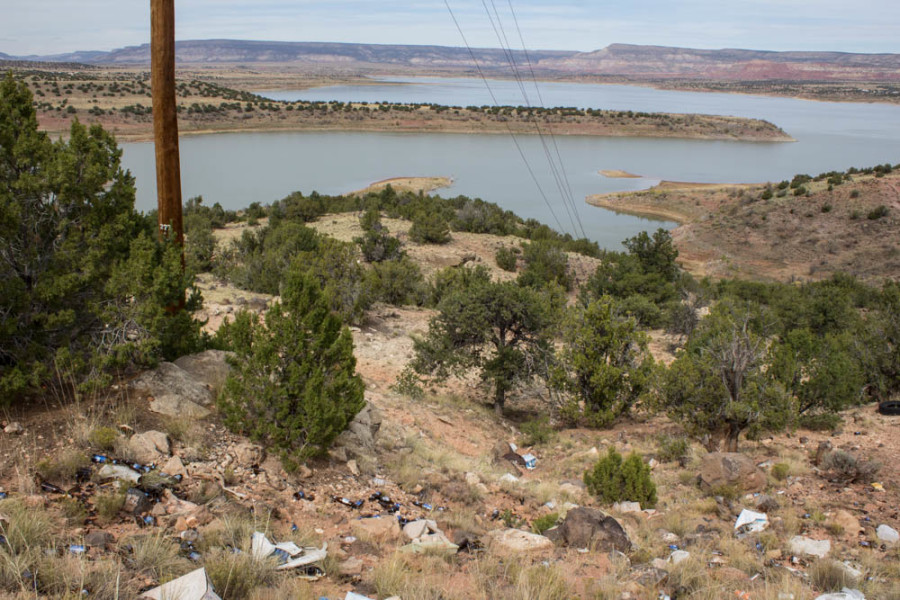
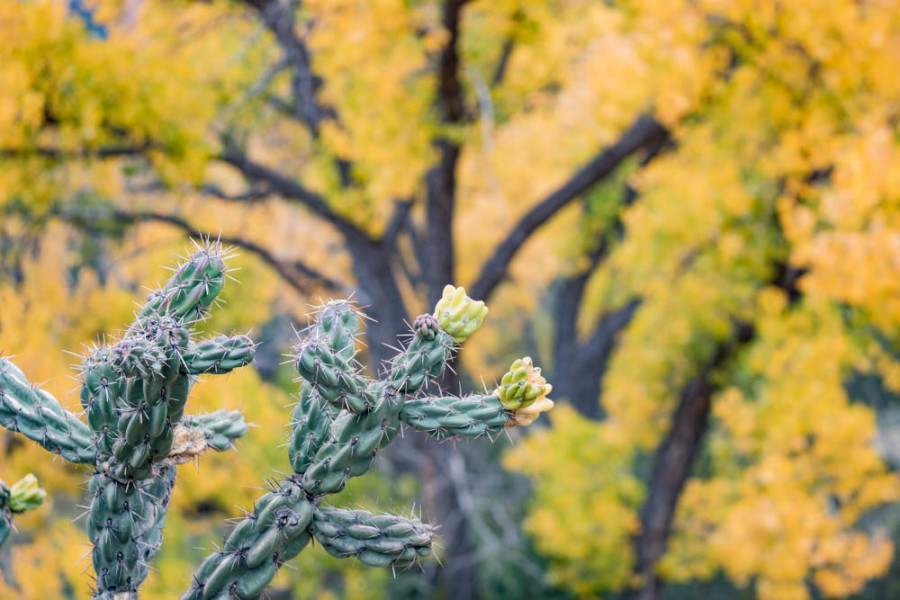
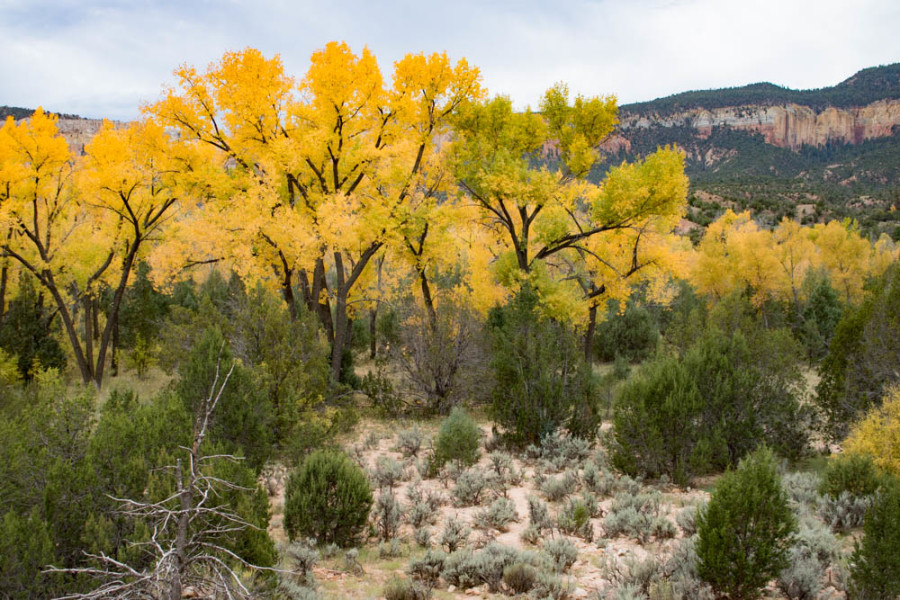
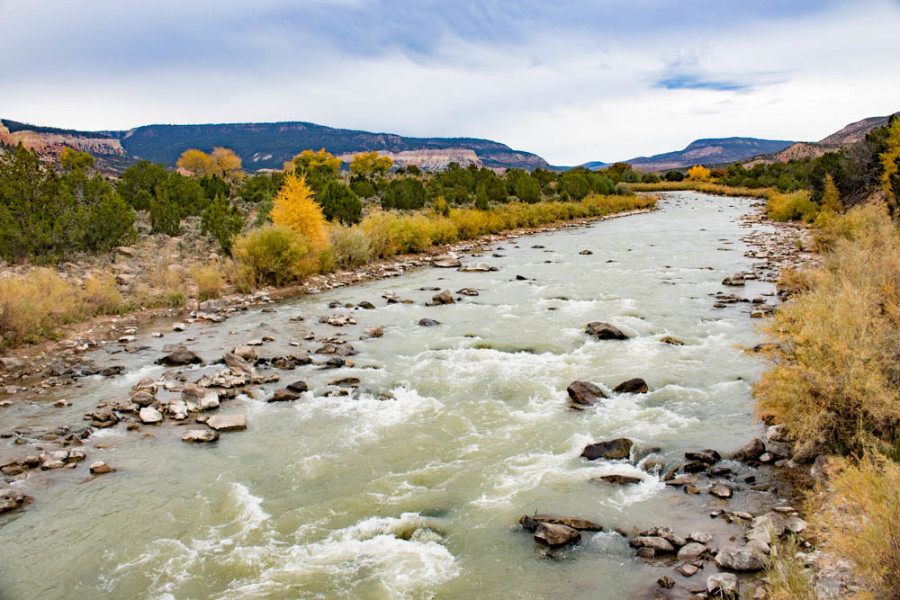
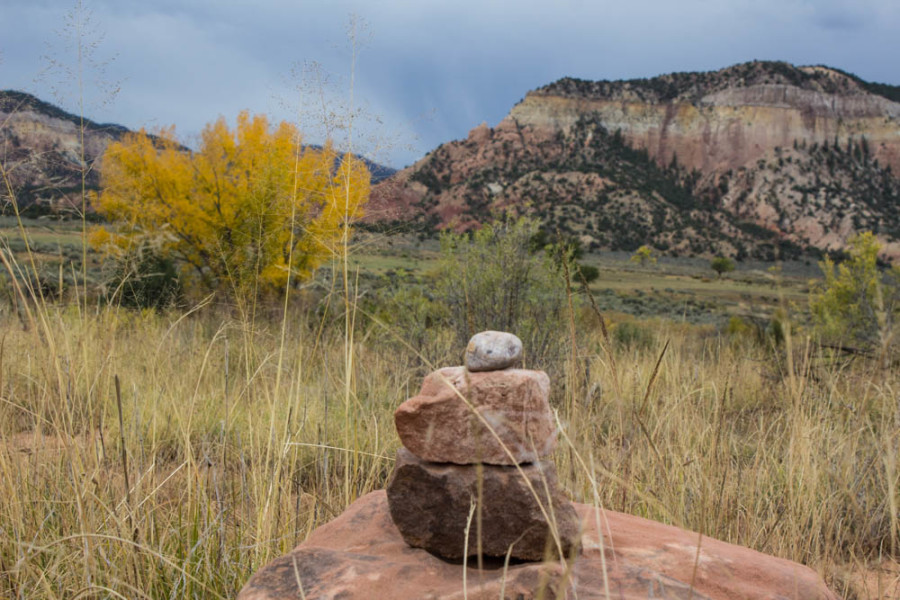
 Jackalope Magazine is the student magazine of Santa Fe University of Art and Design. Building on the interdisciplinary nature of our education, we aim to showcase the talent of our university and character of our city.
Jackalope Magazine is the student magazine of Santa Fe University of Art and Design. Building on the interdisciplinary nature of our education, we aim to showcase the talent of our university and character of our city.
Recent Comments